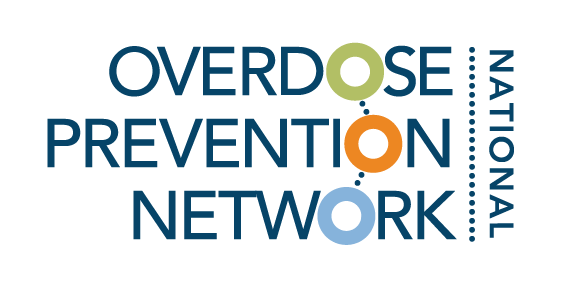
Resource Library
Toolkits, guides, and other resources vetted by experts in overdose prevention.
Filter by category and tags, or search by keyword (ex. COVID-19, harm reduction).
Fentanyl Test Strips (FTS) Disclaimer Example
This resource created by COAST Ventura County is in both English and Spanish and is an example of a disclaimer that can be used when distributing fentanyl test strips to the public. This disclaimer highlights that individuals using FTS should understand that the results may not be perfectly accurate, that the strips are a tool for lifesaving overdose prevention, and that distribution aligns with all legal compliance, etc. This example can be used for other communities and organizations looking to implement a similar disclaimer.
Implementing Harm Reduction Vending Machines
In the Works has developed a new E-Course on Implementing Harm Reduction Vending Machines. This course guides participants through the steps of planning and setting up a successful program, aimed at expanding access to harm reduction supplies and promoting community safety through the implementation of vending machines.
Support Harm Reduction Programs in the LA Region: Organizations requesting support and funds
Our partners at the National Harm Reduction Coalition have shared a curated list highlighting vetted support efforts led by harm reduction organizations in response to the recent wildfires. This includes details on needed supplies and opportunities to donate both for immediate relief and long-term rebuilding. While this list is not exhaustive, it prioritizes the needs of those most affected by the fires, based on the most current information available at the time of publication.
NHRC's Native Harm Reduction Toolkit
The toolkit was conceived and developed by Arlene Brown, a member of the Bishop Paiute Tribe, with support from NHRC staff, including Jessica Smith. It draws on insights from Tribal and Urban Native communities throughout California and incorporates resources from Indigenous harm reduction leaders across the nation and beyond.
Fact Sheet: The Impact of the Overdose Crisis on Latinx Communities in the United States
Drug overdoses have affected all communities across the United States. Yet there are notable racial and ethnic disparities that have emerged over the past 25 years, even though people of all races and ethnicities use drugs at similar rates. Racism, lack of access to treatment and services, targeted drug enforcement, and stigma are some of the most common factors contributing to these tragic losses in our communities. DPA has developed three new fact sheets that describe overdose death trends among Black, Latinx, and Native American communities. They also provide policy recommendations and strategies for how our elected officials can save lives.
Fact Sheet: The Impact of the Overdose Crisis on Black Communities in the United States
Drug overdoses have affected all communities across the United States. Yet there are notable racial and ethnic disparities that have emerged over the past 25 years, even though people of all races and ethnicities use drugs at similar rates. Racism, lack of access to treatment and services, targeted drug enforcement, and stigma are some of the most common factors contributing to these tragic losses in our communities. DPA has developed three new fact sheets that describe overdose death trends among Black, Latinx, and Native American communities. They also provide policy recommendations and strategies for how our elected officials can save lives.
Fact Sheet: The Impact of the Overdose Crisis on Native American Communities in the United States
Drug overdoses have affected all communities across the United States. Yet there are notable racial and ethnic disparities that have emerged over the past 25 years, even though people of all races and ethnicities use drugs at similar rates. Racism, lack of access to treatment and services, targeted drug enforcement, and stigma are some of the most common factors contributing to these tragic losses in our communities. DPA has developed three new fact sheets that describe overdose death trends among Black, Latinx, and Native American communities. They also provide policy recommendations and strategies for how our elected officials can save lives.
Fentanyl and Public Drug Use: A Doctor Gives the Facts
The Drug Policy Alliance’s newest video resource is focused on dispelling myths surrounding fentanyl and features, Dr. Goodman-Meza an expert on the intersection of infectious diseases and addiction. He knows better than most how crucial it is for us to approach drug use and the overdose crisis with solutions based in health and science.
Overview of Recent Substance Use Policy and Legislation in California 2024
The following document summarizes recent policies in California aimed at overdose prevention, substance use disorders (SUD), and mental health based on a presentation by Riana King, Principal Consultant with the California Assembly Committee on Health, during the Summer 2024 COPN Convening. The legislative policies are categorized into four main areas: Funding Capacity, Treatment & Access, Harm Reduction & Prevention, and Oversight & Accountability.
Naloxone Pocket Card Example
OD Free Marin provided their naloxone instructional pocket card PDF for other individuals to use as an example to adapt for local use.
2023 State of the States: Legislative Roadmap for Reducing Overdose Deaths and Increasing Access to Treatment (the Roadmap)
The Legislative Analysis and Public Policy Association developed the 2023 State of the State, which guides state leaders on the most effective approaches to addressing the opioid and other drug epidemic by identifying 10 evidence-based policy approaches to reduce overdoses. Each of the 10 strategies outlined in the Roadmap points to a specific type of policy that states can implement to reduce overdose deaths and increase access to substance use treatment.
Overdose Lifeline
The Overdose Lifeline is a non profit overdose prevention organization based in Indiana that has informational pages on harm reduction and also has free youth focused educational programs like Aaron's Place: Exchange and Camp Mariposa.
Overdose Prevention Centers (OPCs)
The Drug Policy Alliance has created a webpage overviewing information on overdose prevention centers including information on what they do, how they work, and have handouts and a short video to learn more.
Addressing Opioid Use Disorder in Emergency Departments: Expert Panel Findings
The National Council for Mental Wellbeing hosted a technical experts’ panel (TEP) to identify best and promising practices to engage individuals surviving overdose and assist individuals with opioid use disorder (OUD) presenting in emergency department (ED) settings. This report identifies key policy and practice recommendations informed by existing research, case examples and findings from the TEP.
Training and Educating Public Safety to Prevent Overdose Among Black, Indigenous, and People of Color Communities
To better understand the training and education needs of public safety personnel related to preventing overdose in BIPOC communities, and to inform the development of future trainings, the National Council, with the support of the CDC, conducted an environmental scan that included a literature review and a series of key informant interviews and roundtables. The key findings from these activities are explained in this guide.
Overdose Prevention and Response in Community Corrections: An Environmental Scan
The National Council for Mental Wellbeing, with support from the Centers for Disease Control and Prevention, conducted an environmental scan to determine how overdose prevention and response efforts are currently implemented in community corrections. This effort included a literature review, 19 key informant interviews and a roundtable discussion with a diverse group of individuals with experience in community corrections, overdose prevention or harm reduction.
Supporting Telehealth and Technology-assisted Services for People Who Use Drugs: A Resource Guide
This resource guide created by the National Council for Mental Wellbeing (National Council) aims to help harm reduction organizations, SUD treatment providers and other organizations that serve PWUD overcome challenges associated with implementing telehealth and technology-assisted services and leverage these advances to help improve the health and wellness of PWUD.
Public Awareness Campaigns
The CDC generates a number of educational campaigns that you can utilize in your community. Use this webpage to see the variety of awareness campaigns and materials available.
Opioid Overdose Basics
The National Harm Reduction Coalition’s training guide on opioid overdose basics provides an overview of opioid overdose basics, what is an overdose?, understanding naloxone, overdose risks & prevention, recognizing opioid overdose, responding to opioid overdose, and overdose FAQs.











